The Washington State Department of Natural Resources (DNR) Chattawood forest health sale covers two areas: Chattaroy and Chattawood. Chattaroy is located in the vicinity of Deer Park, Washington and Chattawood is located approximately 10 miles north of Deer Park on State Route 395. These timber sales were designed to reduce fire risk to adjacent communities by removing the smaller diameter materials while maintaining an overstory of mature ponderosa pine for amenity values. The headline photo taken as a panorama view of the Chattawood sale illustrates the multiple benefits of forest biomass use. From right to left we see the transition from an untreated high density forest condition that is prone to fire (far right), a post harvest view of the treated stand (middle) with an open forest structure that is resilient to fire and pleasing to look at; the byproducts which are forest products (not shown), including forest residuals (slash) that has been processed into a co-product (middle left), suitable for producing energy (left).
The Chattawood Timber Sale provided a unique opportunity to determine the potential for economic recovery of slash for use as a bio-energy feedstock. The sale is on a major highway, is within a reasonable haul distance to a bio-energy facility and local businesses were willing to invest in removing the biomass as a test case. The DNR, Vaagen Brothers Lumber Inc, and Avista Corporation agreed to remove and grind the biomass using Vaagen Brothers equipment and ship it to Avista’s energy generation facility in Kettle Falls. Figures 1 to 3 show the collection and aggregation process for removing the slash, and Figures 4 and 5 show the equipment used and the output of the biomass removal process.
This photo essay highlights both the simplicity and the challenges of removing forest residuals. Discussions with contractors on the Chattawood test case identified the need for modifications in equipment configuration and system balance (ratio of different kinds of equipment needed for slash removal) to increase efficiency, and changes to harvest layout and piling protocols to reduce in-woods travel times and recovery costs. These needs can be met with planning if removal of biomass becomes a routine part of forest harvest operations. Greater challenges will be in finding adequate on-site processing locations, and in finding sufficient operational efficiencies that economic recovery is possible given the often long distances to bio-energy facilities.


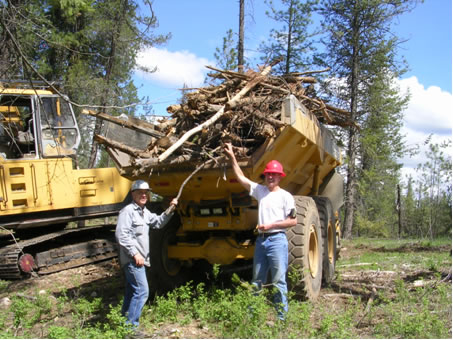 |
Figure 1: A load of harvest residue ready for transport to the main processing location
|
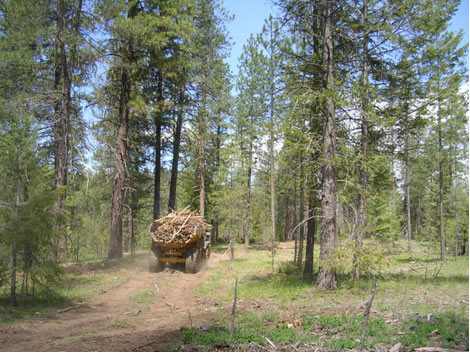 |
Figure 2: Hauling the load – increasing distances substantially increase the cost of removal |
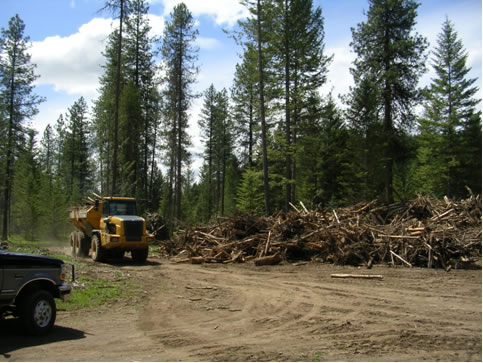 |
Figure 3: Residual pile at the main processing deck |


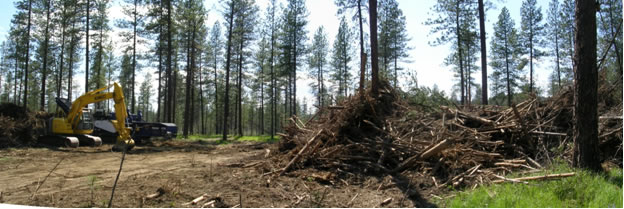 |
Figure 4: Processing equipment |
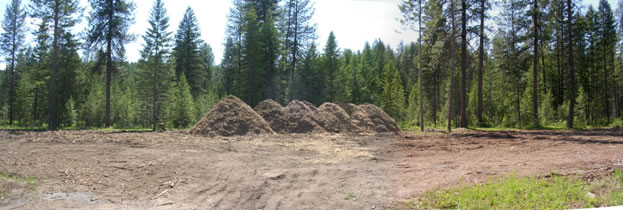 |
Figure 5: Slash ground into a uniform product ready for transportation to the biomass facility
|
Data on residual biomass in piles and dispersed slash has been collected from other harvest units in northeastern Washington covering dry, moist and cold forests and several types of logging systems, including seven DNR sites (Figure 6). The residual biomass in these samples ranged from 16 to 55 tons/acre depending upon a number of site specific conditions. Thus far our sampling indicates that the volume of biomass potentially available from current harvesting operations could provide a substantial raw material input for renewable energy initiatives. By identifying where biomass exists and in what size classes, the analysis will clarify how existing management goals for post harvest retention of standing trees and downed wood can be incorporated into systems that will remove biomass to meet market demand for bio-energy and biofuels.
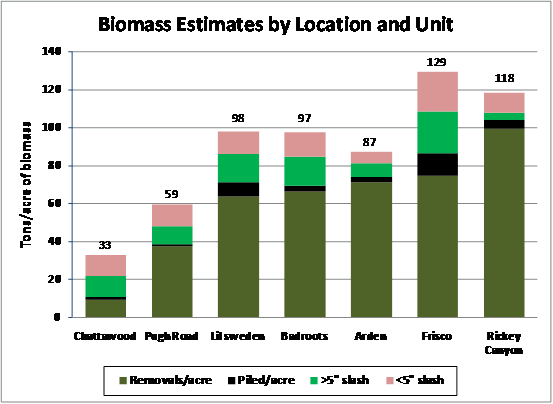 |
Figure 6: Tons/acre of harvested biomass by type |
Given that our samples include (1) sites where forest health improvement is the focus, (2) sites that were harvested during a range of market conditions, and (3) sites where timber values alone support the harvest including variations in transportation costs, we have a wide range of inventory conditions to compare to the biomass samples and will be able to derive useful relationships for predictive modeling of future biomass supply relative to standing inventory. This modeling step will provide the estimate of available biomass that can be calculated from pre-treatment inventory of potential forest health sites (specific to forest types) as well as quantifying likely biomass availability from current harvest operations.
Summary
The DNR Chattawood sale provided an excellent case study of the potential for biomass recovery to augment forest health improvement treatments, reduce wildland fire risk, reduce smoke emissions from post-treatment pile burning, increase economic activity, and meet renewable fuels mandates. The test case provided a unique set of data for the biomass availability study as well as an opportunity to learn ways to improve our recovery of this important natural resource.

|







